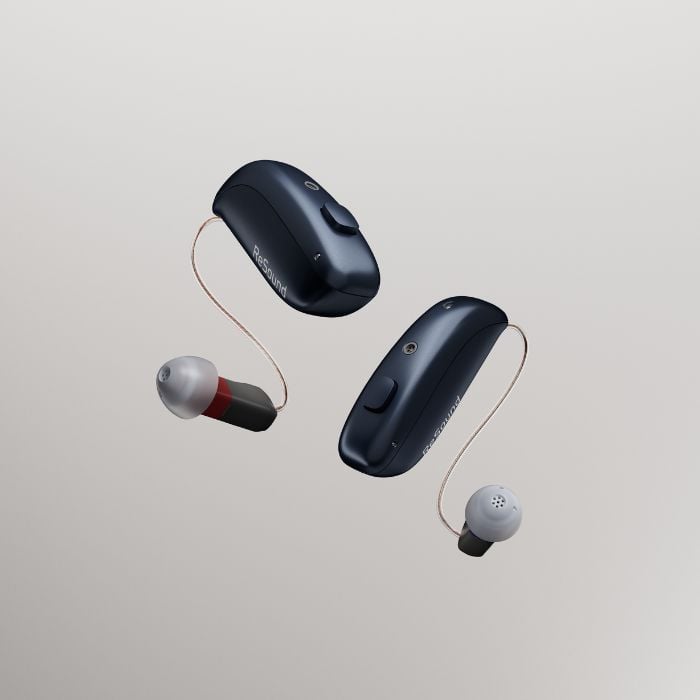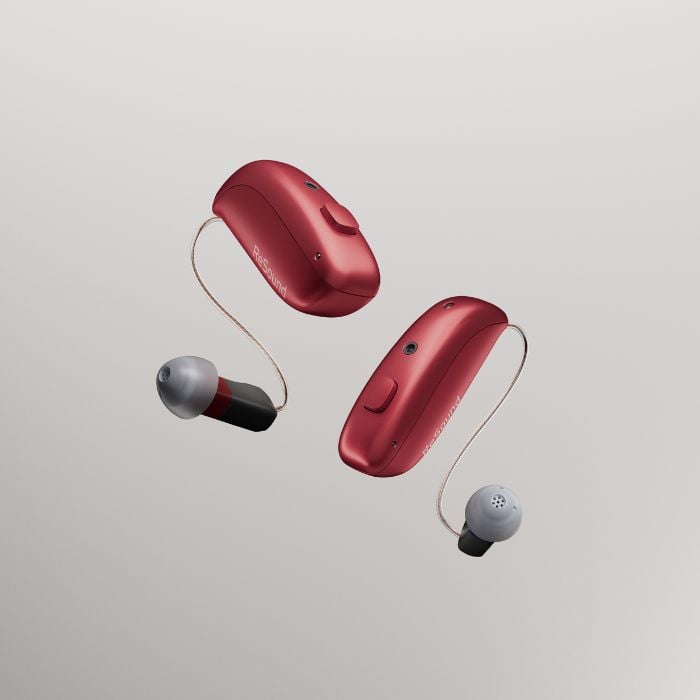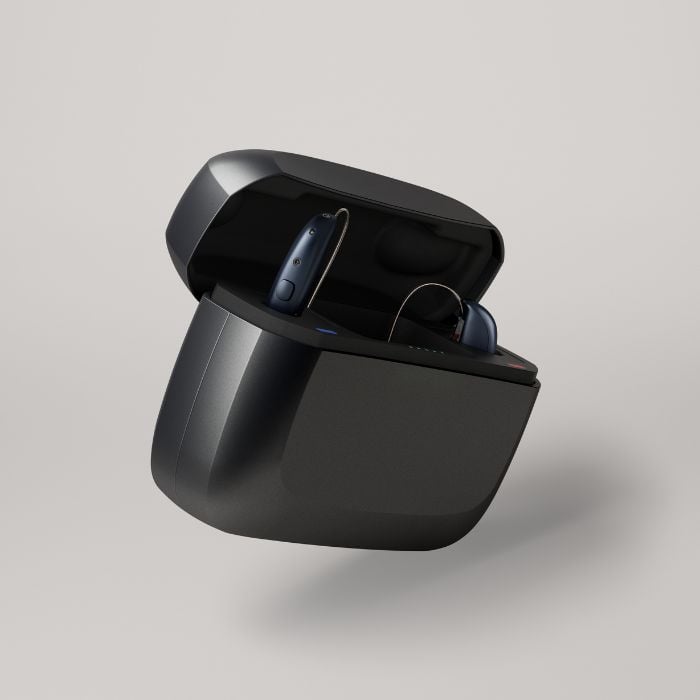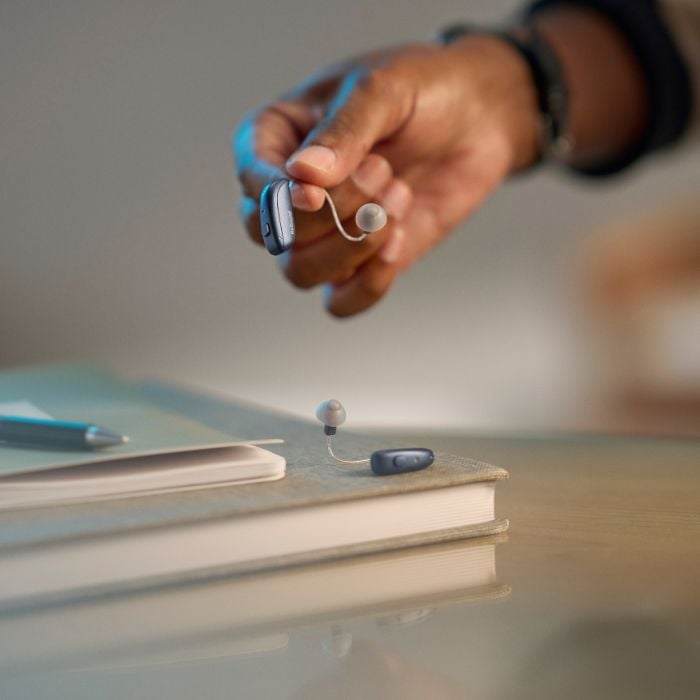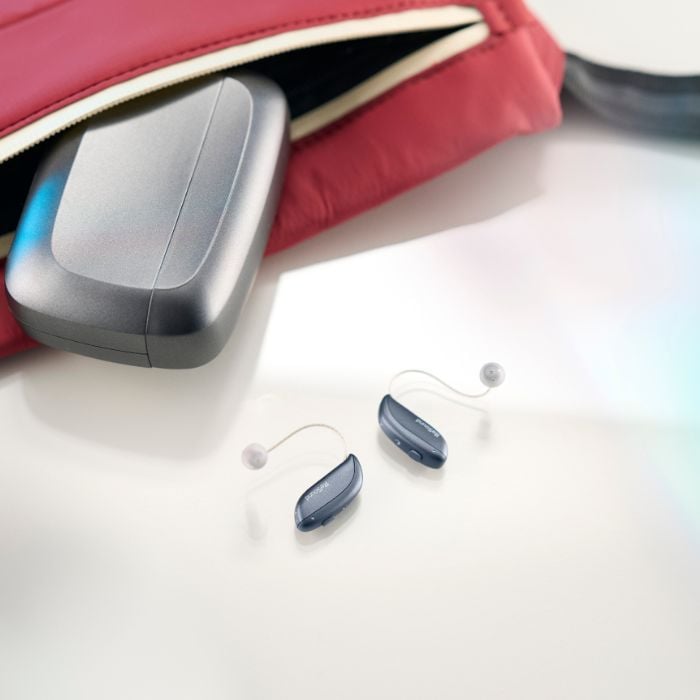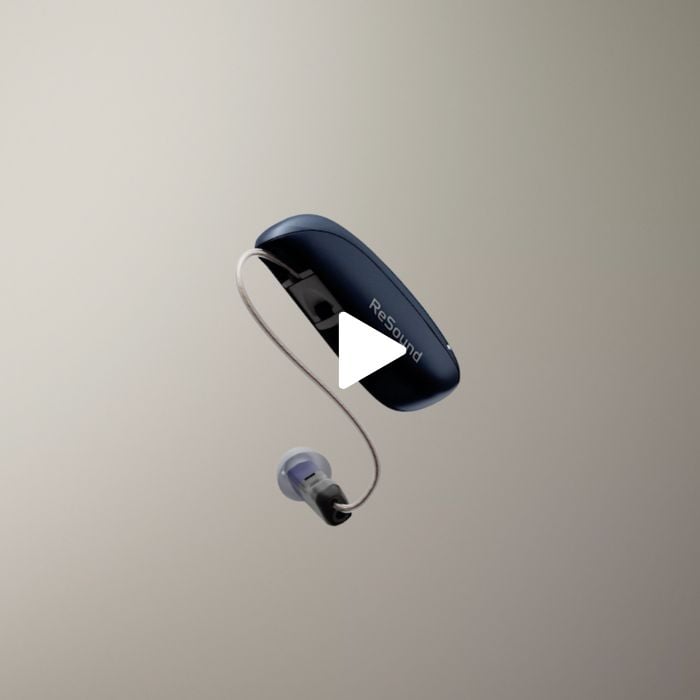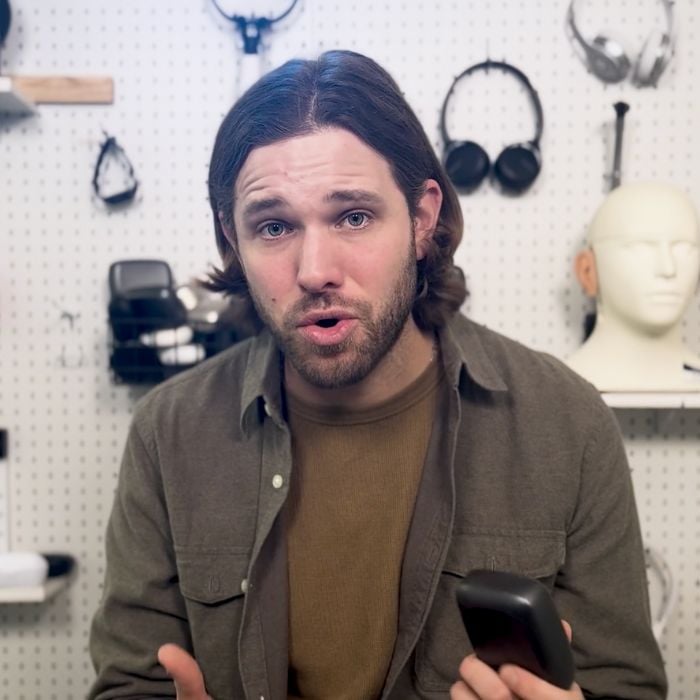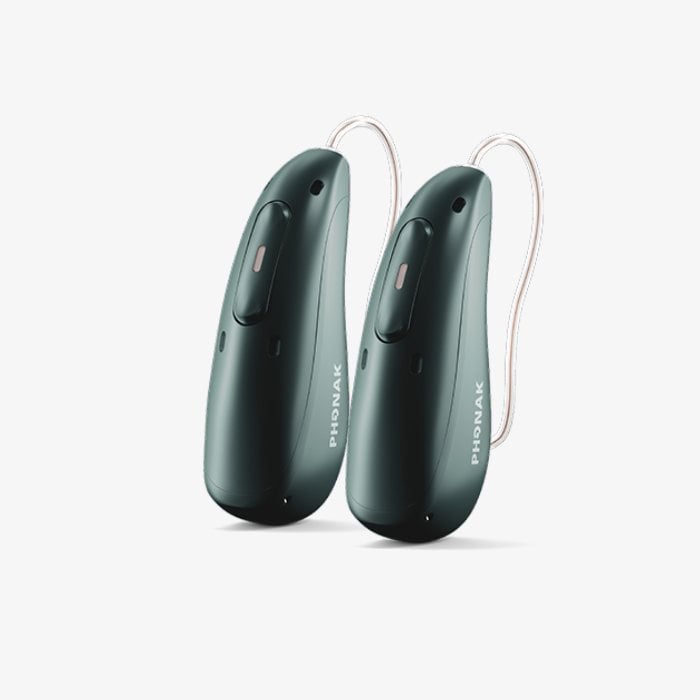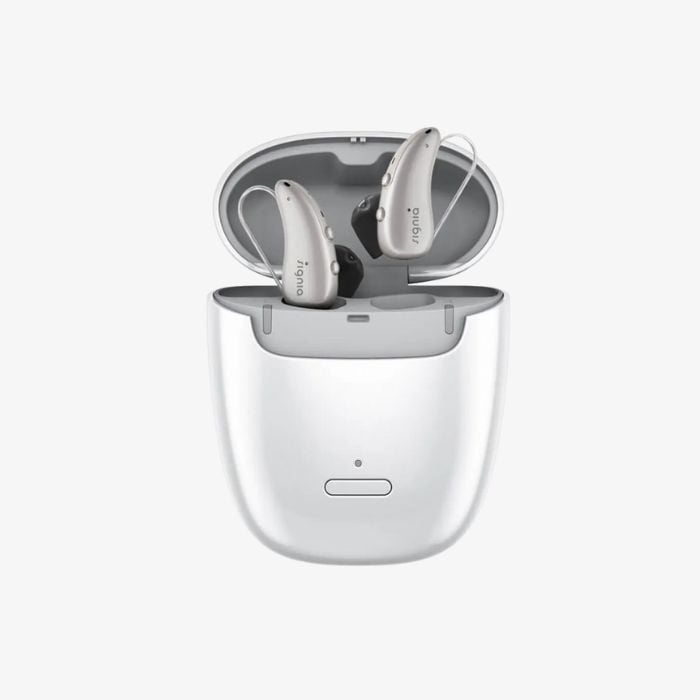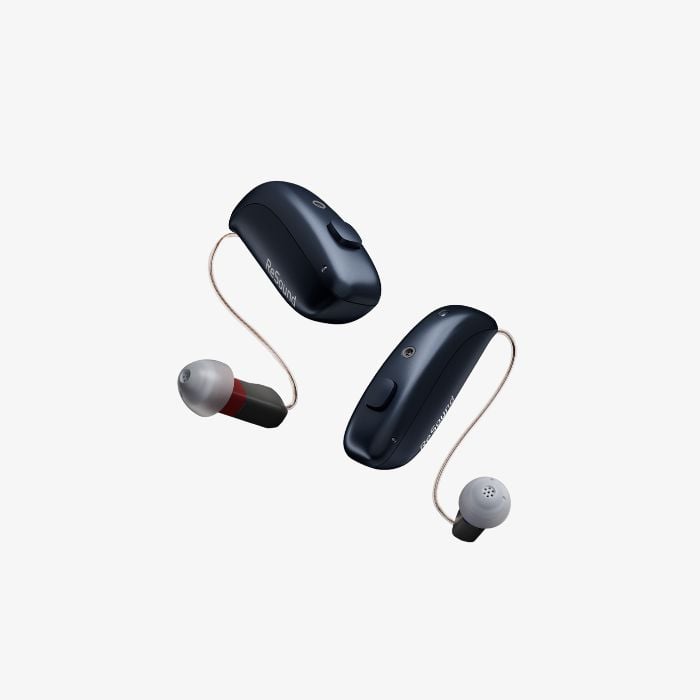ReSound Vivia
Background
ReSound has unveiled its flagship hearing aid for 2025: the ReSound Vivia. Replacing the ReSound NEXIA, this next-generation device launches in late February 2025 with notable new advancements.
Below, we cover what we know so far and will update this page with a full review once our team has tested the new product in-depth.
Key Features & Upgrades
✅ AI-Powered Intelligent Focus Feature
- Vivia features a new dedicated AI chip trained on 13.5 million speech samples.
- Enhances conversations by filtering out background noise while amplifying voices.
- This is the first onboard AI chip from ReSound and one of the first in the industry.
✅ Smart Beamforming Technology
- Like past generations of ReSound hearing aids, Vivia uses beam-forming microphones to focus on the person you want to hear.
- Beamforming technology and the onboard AI chip work together to clean up the signal and choose the right voices to amplify.
✅ Long Battery Life
- Up to 30 hours on a single charge.
- 20+ hours of battery life with AI-powered 'Intelligent Focus' enabled for speech clarity for 6-7 hours.
- Users can toggle AI on/off via onboard buttons or the ReSound app to conserve battery.
✅ Advanced Bluetooth & Auracast Compatibility
- ReSound Vivia supports Bluetooth Low Energy (LE) Audio and Auracast, making it future-proof with new Bluetooth innovations on the horizon.
- Allows direct streaming for Android & iPhone devices.
- Auracast features enable direct audio streaming from public spaces like airports & theaters (where available).
✅ Compact & Comfortable Design
- Despite its advanced AI technology, Vivia remains very small compared to competitors on the market.
- Available in micro RIC (receiver-in-canal) form factor.
- Rechargeable & disposable battery options available to fit different user needs.
- Available in CROS models
How Does Vivia Compare?
Compared to earlier ReSound models, Vivia is a meaningful technical step forward:
- The onboard AI chip inside of Vivia devices is an important step towards the future of technology in the industry.
- We will report back with real-world performance and testing but ReSounds research shows a compelling improvement in speech understanding
- Same discreet design as previous models but with significantly more powerful technology.
Is ReSound Vivia Right for You?
If you're looking for a premium, clinic-prescribed hearing aid with advanced AI and exceptional sound quality, ReSound Vivia is a strong contender. We anticipate it will become a leading product among the smartest hearing aids available. We'll update this review as we gather more real-world user feedback.
- ReSound Vivia is a fully customizable, prescription hearing aid appropriate for mild-severe hearing loss
- If you have severe hearing loss, your care provider may fit you with a custom earmold to reduce feedback
- If you have profound hearing loss, you may be a better fit for ReSound high-powered BTE
- ReSound Vivia is a prescription device fit and programmed by a professional
- After an initial fitting, you can connect with your care provider remotely through the ReSound app
- ReSound Vivia is an excellent choice for background noise management. The new onboard AI chip is focused on increasing clarity in the toughest listening settings
- Vivia uses a combination of beam forming microphones and noise reduction algorithms to single out speech in complex noise environments
- ReSound Vivia is a discreet and comfortable product, but some users with smaller ear canals find the M&RIE receiver uncomfortable in their ears. M&RIE can be removed by your care provider and replaced with a standard receiver.
- ReSound Vivia hearing aids sit behind the ear
- Vivia is one of the smallest behind-the-ear style devices on the market. Vivia's size is particularly impressive given the new dual-chip architecture and strong battery life.
- Vivia comes in a wide range of colors, including new Navy Blue and Red options.
- Vivia comes with three battery options, including micro RIE rechargeable (30 hours), a larger disposable battery version (size 13), and a second disposable battery option (size 312).
- A rechargeable version of Vivia is also available with a CROS (for single-sided deafness)
- Vivia is one of the first hearing aids on the market to release Auracast-compatible hearing aids. Auracast will take a few years to roll out in public spaces. Still, once it is available, it will allow users to stream public announcements, movies, and other shared audio experiences directly to their hearing aids.
- Of course, Vivia also allows standard Bluetooth streaming from iPhone and Android devices. iPhone users can take calls hands-free, while Android users must keep their phones close to pick up outbound audio.
- Vivia uses Apple's MFI connection and Android's ASHA connection to stream content through Bluetooth
- Vivia is reasonably easy to handle but does require the wearer to place the hearing aid behind their ear and insert the receiver into the ear (consistent across all behind-the-ear styles)
- Vivia's recharging cases use conduction charging, which is easier to handle
- Vivia has an app feature that uses your phone camera to check that the hearing aids are in the ear properly
- ReSound Vivia is water resistant with an IP rating of 68
- This hearing aid can withstand dust and water submersion in one meter of water for up to 30 minutes
- Remote care: After an in-office activation, the remote care option is available on the app
- Customization: Volume control, treble/bass, streaming treble/bass, programs
- Tinnitus masking: Customizable programs with a hearing care professional or use the Resound Relief app to experiment with masking noise
- Find my hearing aid: Yes, feature is included in the app
- Check my fit: An app feature from Resound to check the hearing aids are in the ear properly
Read our full review of the ReSound App here.
Pricing
The national average price for ReSound Vivi 9 hearing aids is around $7,410 per pair.
Our research indicates that the best pricing and care packages are currently available through ZipHearing. ZipHearing offers a pair of ReSound Vivia hearing aids with one year of unlimited care for $4,298 per pair.
Process
ZipHearing will match you with a local clinic near your zip code and pre-negotiate a lower price (typically 25% less than the national average).
Fill out the form on this page to get matched with a local clinic.
Our readers are consistently happy with ZipHearing's offering and give the company 97% 5-star ratings on Trustpilot.


